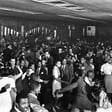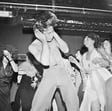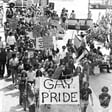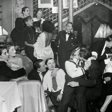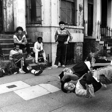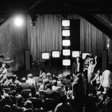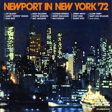
S02E05 Jazz, Africa & Islam - Part Three: ‘Search for a New Land’
The involvement of progressive Jazz musicians with Islam in the 1950s and 60s was shaped by the practices of Sunni Islam and the Black internationalism of several African American Muslim communities formed in the early 20th Century, notably the Islamic Mission of America (1939), the Addeynu Allahe-Universal Arabic Association (1938) and the First Cleveland Mosque (1937). These Sunni organisations emphasised the importance of pride in African ancestry, and their goals of self-reliance, empowerment and spiritual uplift through independent Islamic programs, institutions, and networks appealed to growing numbers of young Black Americans, including outsider Jazz musicians. The full roster of Art Blakey & The Jazz Messengers, pianist Ahmad Jamal, saxophonist Sahib Shihab, McCoy Tyner and many others all converted to Islam during this period.
Growing militancy within the American Islamic communities and the wider Civil Rights movement aided the expansion of the Nation of Islam, spearheaded by its charismatic national spokesman Malcolm X. Famous Hard Bop musicians Grant Green and Lee Morgan and soul and blues legend Etta James were all NOI members, producing some of the greatest American music of the 20th Century.
The international reach of the American Islamic movements put them on a collision course with the counterrevolutionary efforts of the FBI and CIA during the 1960s, when the Civil Rights Movement had its most profound successes but experienced its greatest tragedies.
Books:
What The Music Said: Black Popular Music & Black Popular Culture - Mark Anthony Neal
Soundtrack to A Movement: African American Islam, Jazz & Black Internationalism - Richard Brent Turner
A Love Supreme - Ashley Khan
Giant Steps / Cookin' - Kenny Mathieson
3 Shades of Blue: Miles Davis, John Coltrane, Bill Evans & The Lost Empire of Cool - James Kaplan
Jazz & Justice - Gerald Horne
Tracks:
The Call - Sahib Shihab
Hannibal’s Cannibals - Ahmed Abdul-Malik
Poinciana - Ahmad Jamal
Cease The Bombing / Alone, Together – Grant Green
Search for A New Land / Mr Kenyetta - Lee Morgan
Anything to Say You’re Mine – Etta James
EMCK
